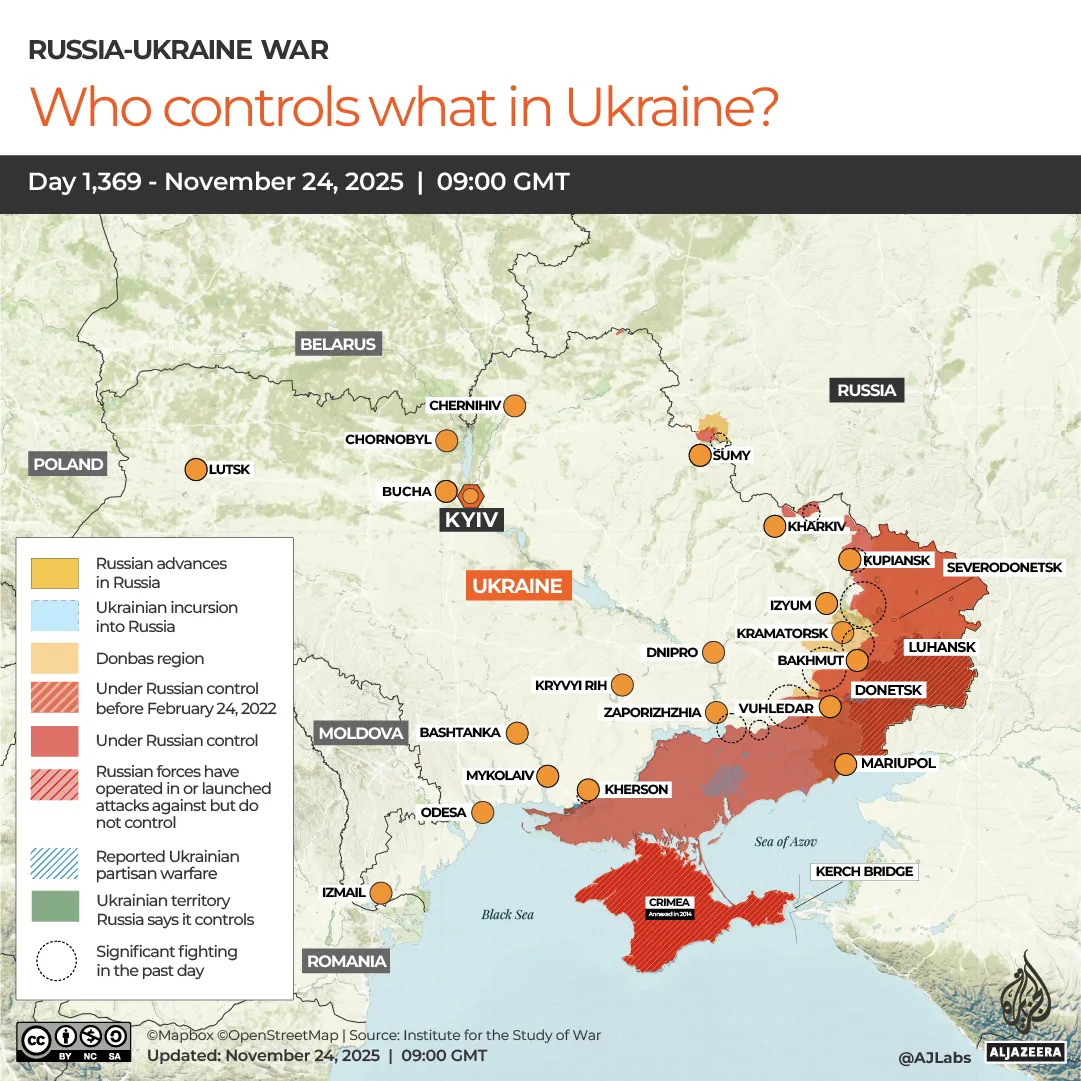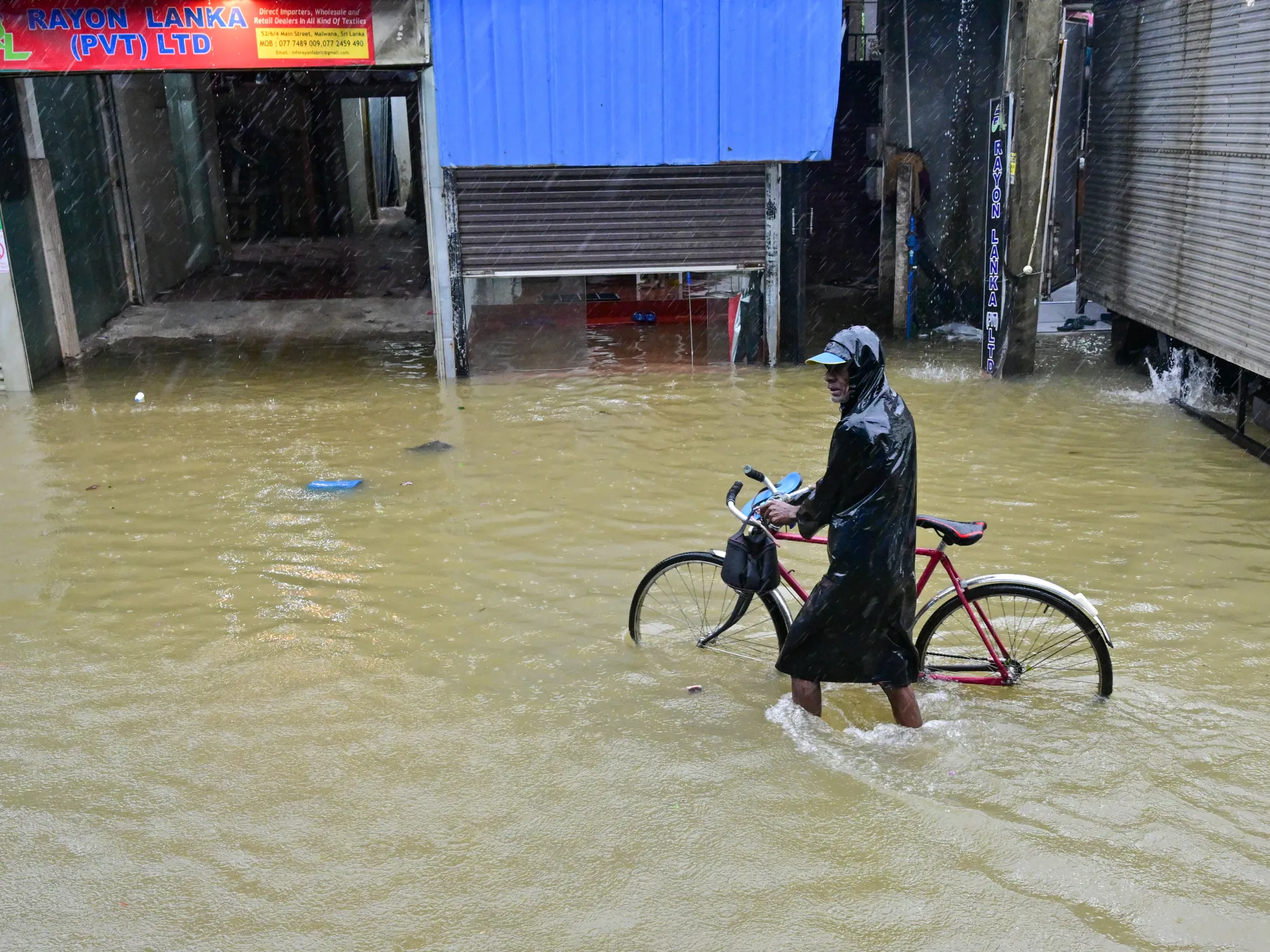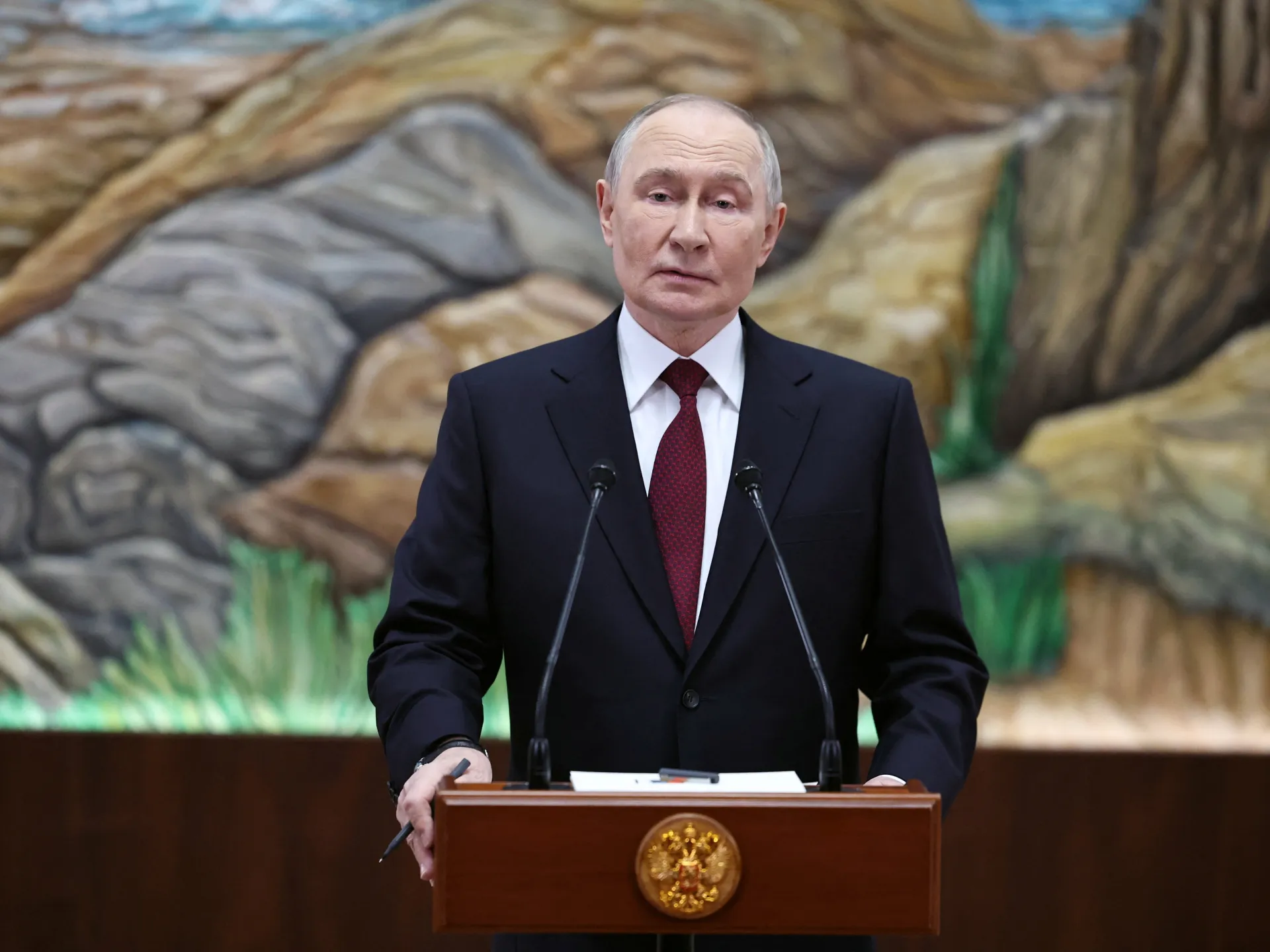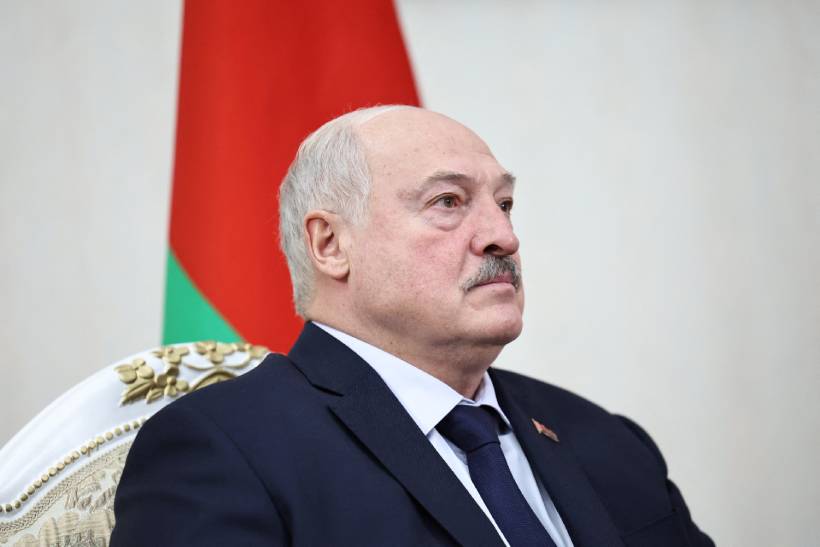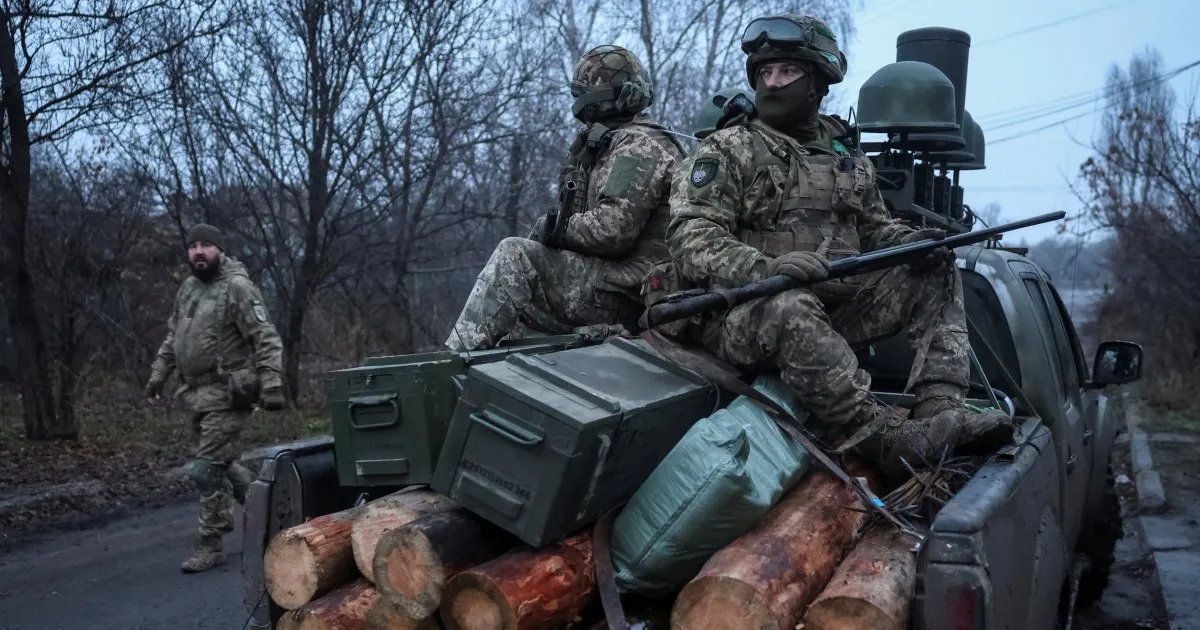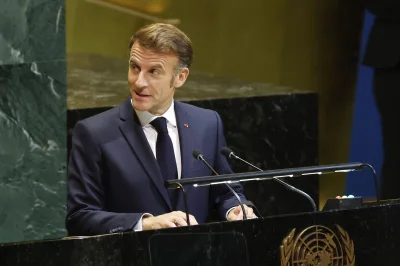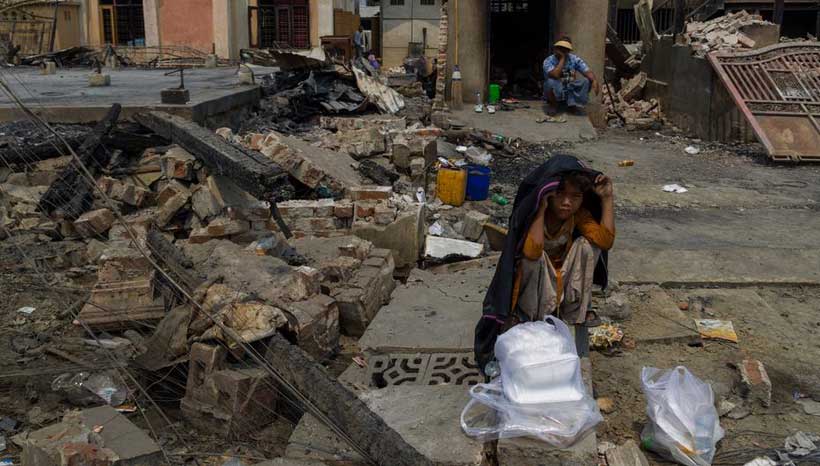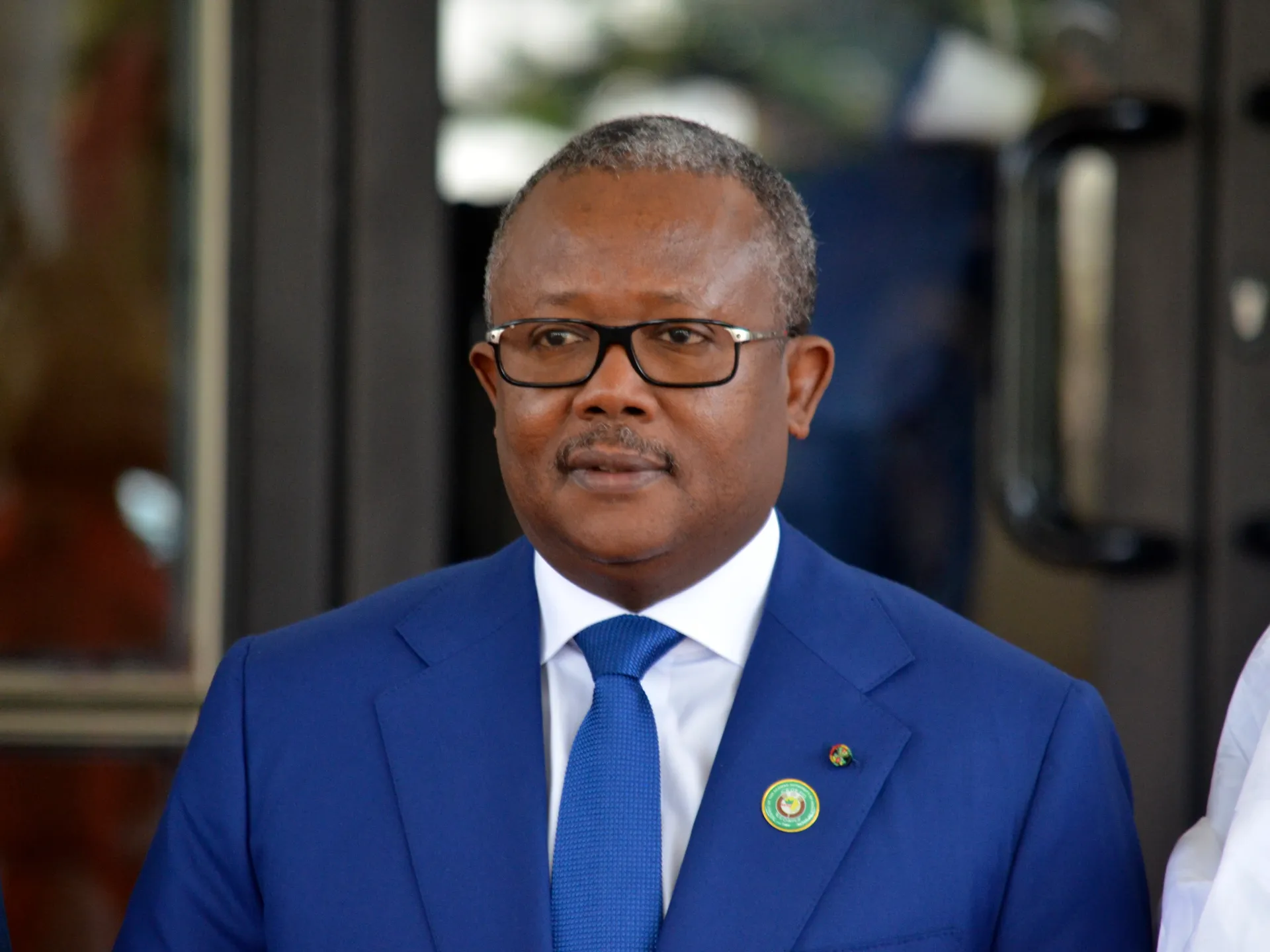In Geneva and Pokrovsk, Ukraine fights Trump peace plan and Putin’s troops | Russia-Ukraine war News
Ukraine has mounted a fierce defence of Pokrovsk for the fifth straight week since Russia’s concerted offensive began to take its eastern city, while at the same time it tries to finesse a Russian-inspired United States peace plan heavily criticised by US lawmakers.
The Russian Ministry of Defence said on Monday its “assault groups of the 2nd Army have completely liberated the Gornyak and Shakhtersky microdistricts in Pokrovsk.
On Tuesday, it said its forces were fighting in the Vostochny and Zapadny districts of Myrnohrad, to the east of Pokrovsk.
Both cities, in Ukraine’s Donetsk region, lie within an envelope which Russian forces have gradually tried to seal shut. Supplies and reinforcements can currently only reach Ukrainian forces from the west – and Russia claims to have effective fire control over those supply routes.
Ukrainian officials insisted the defence of Pokrovsk was still very much a contest. “Our positions are held in the centre of Pokrovsk, shooting battles continue, and the enemy fails to consolidate,” said Ukraine’s head of the Center for Countering Disinformation Andriy Kovalenko on Sunday, citing the 7th Air Assault Brigade fighting there.
Ukraine has evidently strained its resources to defend the Pokrovsk-Myrnohrad enclave, whereas the concentration of Russian offensive forces in Pokrovsk has not compromised their ability to assault elsewhere.
During November 20-27, Russia claimed to have seized Petropavlovka in Kharkiv, Novoselivka, Maslyakovka, Yampol, Stavki, Zvanovka, Petrovskoye, Ivanopolye and Vasyukovka in Donetsk, Tikhoye and Otradnoye in Dniperopetrovsk, and Novoye Zaporozhiye and Zatishye in Zaporizhia.
The Russian forces’ recent rate of advance has amounted to about half a dozen villages a week.


But Ukraine disputes some of Russia’s claims.
On November 20, Russian chief of staff Valery Gerasimov said his forces had seized the city of Kupiansk in Ukraine’s northern Kharkiv region, and were setting upon retreating Ukrainian units on the left bank of the Oskil River.
But Kovalenko replied on the Telegram messaging service: “Russia did NOT occupy Kupiansk. Gerasimov is just a liar,” and he repeated the claim a week later.
Ukraine has also had successes on the ground, according to its commander-in-chief, Oleksandr Syrskii. “Despite enemy pressure, the Defence Forces of Ukraine managed to carry out counteroffensive actions in the Dobropillia direction from the end of August to October this year,” he said, referring to a failed Russian flanking manoeuvre towards a town northwest of Pokrovsk.
“As a result, the units split the enemy’s offensive group and liberated over 430 square kilometres [166 square miles] north of Pokrovsk. Russian losses amounted to more than 13,000 killed and wounded.”
Russia also kept up pressure on Ukraine’s rear, launching 1,169 drones and 25 missiles at its cities during the week of November 20-26. Ukraine downed 85 percent of the drones and 14 of the missiles, but Zelenskyy called for more short- and medium-range defences.

Questionable diplomacy
Europe, Ukraine and members of the US Congress have all pushed back against a 28-point peace plan presented by the US administration of Donald Trump last week, describing it as too Russia-friendly.
In its original form, the plan granted key points that Russia has demanded. That included a promise from Ukraine never to join NATO and the surrendering of almost all the territory Russia has taken by force, along with the unoccupied remainder of Donetsk. The US and Ukraine’s other Western allies would have to recognise those annexations as legal.
Ukraine would have to hold an election within 100 days of the plan’s signature – one that Russia seems to believe would unseat Zelenskyy.
Russia has also demanded that Ukraine effectively disarm. The 28-point plan suggests reducing its armed forces by about a third, to 600,000 personnel.
“Right now is one of the hardest moments in our history,” Zelenskyy told the Ukrainian people after seeing the plan, describing it as a choice between “either the loss of our dignity or the risk of losing a key partner”.
The Republican chairman of the Senate Armed Services Committee Senator Roger Wicker said in a statement: “This so-called ‘peace plan’ has real problems, and I am highly skeptical it will achieve peace.”
Polish Premier Donald Tusk politely said on social media: “It would be good to know for sure who is the author of the plan and where was it created.”
The plan drew heavily from a Russian non-paper submitted to the White House in October, said the Reuters news agency.
“Trump’s 28-point plan, which we have, enshrines the key understandings reached during the Alaska summit,” Russian Foreign Minister Sergey Lavrov told reporters.
“I would say not all, but many provisions of this plan, they seem quite acceptable to us,” Putin aide Yury Ushakov told the TASS Russian state news agency.
The United Kingdom, France and Germany drafted a counter-proposal on Sunday, and a Ukrainian delegation led by former Defence Minister Rustem Umerov met with US negotiators under Secretary of State Marco Rubio in Geneva to discuss both documents.
Europe ruled out accepting territorial exchanges resulting from aggression, and suggested territorial negotiations begin from the line of contact without prior Ukrainian concessions. It also suggested Ukraine maintain a strong army of no fewer than 800,000 people, and receive an effective NATO security guarantee.
Their joint statement on Monday simply said they would “continue intensive work”, with final decisions to be made by Trump and Zelenskyy.
Much had been done to refine the original 28 points into a workable agreement, said Zelenskyy. “Now the list of necessary steps to end the war can become doable,” he told Ukrainians somewhat cryptically, describing the work that remained as “very challenging”.
Ukraine has pushed for a meeting between Zelenskyy and Trump before December to thrash out the plan’s final form, but on Tuesday, Bloomberg released transcripts of a leaked telephone conversation between Trump confidant Steve Witkoff and Putin aide Yury Ushakov, in which Witkoff advised Ushakov to have Putin call Trump before Zelenskyy had a chance to meet him. Witkoff suggested that Putin flatter Trump as a peacemaker to win his favour and shape the peace plan directly with him.
That leak prompted opposition to Witkoff travelling to Moscow next week to discuss the reworked plan with Russian officials. The White House said he is to replace General Keith Kellogg, who resigned as mediator for Ukraine after seeing the original 28-point plan.
“It is clear that Witkoff fully favors the Russians. He cannot be trusted to lead these negotiations. Would a Russian paid agent do less than he?” wrote Republican Congressman Don Bacon on social media.
For those who oppose the Russian invasion and want to see Ukraine prevail as a sovereign & democratic country, it is clear that Witkoff fully favors the Russians. He cannot be trusted to lead these negotiations. Would a Russian paid agent do less than he? He should be fired. https://t.co/dxMsda0YV5
— Rep. Don Bacon 🇺🇸✈️🏍️⭐️🎖️ (@RepDonBacon) November 25, 2025
In his first extensive remarks on the peace proposal, in Bishkek, Kyrgyzstan on Thursday, Russian President Vladimir Putin backed away from an agreement with Ukraine, saying, “Signing documents with the Ukrainian leadership is pointless,” because Zelenskyy was a president who had outlived his mandate.
“I believe that the Ukrainian authorities made a fundamental and strategic mistake when they succumbed to the fear of participating in the presidential elections,” he said, referring to the spring of 2025, when Zelenskyy’s four-year term expired.
Zelenskyy was elected in 2019, and the parliament has twice extended his tenure under the constitutional provision of a national emergency.
Putin said the 28 points did not amount to a peace treaty, calling them “a set of questions that were proposed for discussion and final wording”.
“In general, we agree that this can be the basis for future agreements,” Putin said.

